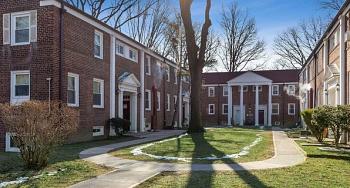Instead of a Balcony, How About a Garden Apartment?
Pandemics and potential health threats posed by living in close quarters have long had an impact on the way homes have been built.
About a century ago, some developers responded by creating garden cities — low-slung housing, set far apart and extra leafy. And then after World War II, came garden apartments, which despite less fancy architecture didn’t skimp on the greenery.
Though both types of these garden communities cropped up from coast to coast, the borough of Queens is something of a national hotbed, with dozens of examples from Sunnyside Gardens to Parkway Village to Glen Oaks.
Now, as anxiety about germs again informs housing decisions, these simulacra of the suburbs may be getting a fresh look.
“When you can’t go outside, it starts to grind you down,” said Kathryn Giannelli, 37, a social-studies teacher whose previous home, a two-bedroom apartment in a high-rise near Queens Boulevard that she shared with her partner and son, felt increasingly “claustrophobic” as the pandemic progressed.
She recently moved into a renovated two-bedroom, two-bath duplex with a balcony that cost $375,000 at Parkway Village, a 675-unit, 35-acre co-op in Jamaica. “It’s very green and very quiet,” Ms. Giannelli said.
The complex was built in 1947 as a rental before going co-op in 1983. In 2019, the Manhattan-based real estate firm Glacier Equities bought 63 sponsor-owned rentals at Parkway Village that are gradually being renovated with finishes like stainless-steel appliances, quartz counters and coffered ceilings. Sales have been strong, with nine units selling since hitting the market over the summer, though the older stock has traded, too.
Sales at other similar garden communities have largely held steady, which is significantly better than the fate of more traditional apartment buildings in Manhattan, where sales volume was down by about 20 percent in the last three months of 2020. Brokers say that at many garden communities, sales inventory was low in 2020, perhaps because fewer people were choosing to move since they were able to take advantage of the open space in their complexes.




